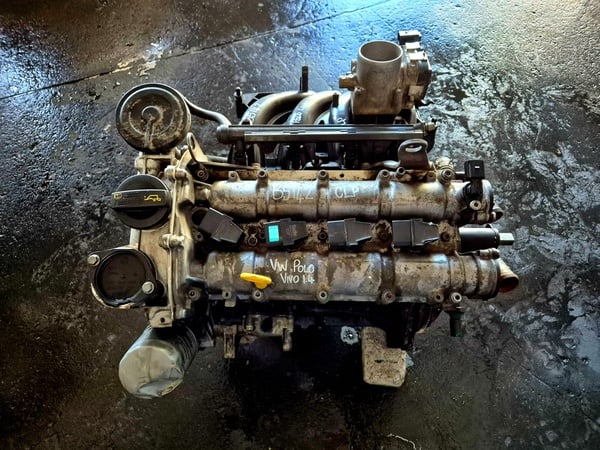Invest in a powerful clp engine for demanding tasks.
Invest in a powerful clp engine for demanding tasks.
Blog Article
How a Clp Engine Can Enhance Efficiency in Numerous Industries
The introduction of CLP engines marks a substantial shift in operational effectiveness throughout numerous sectors, driven by their capability to maximize fuel usage and lessen downtime. As companies increasingly prioritize sustainability together with effectiveness, the function of CLP engines comes to be also much more important.
Review of CLP Engines
CLP engines, or Continual Fluid Propellant engines, represent a significant innovation in propulsion technology, specifically for room applications. These engines make use of a constant feed system that enables for the sustained expulsion of propellant, bring about boosted effectiveness and performance compared to typical strong or hybrid propulsion systems. By preserving a constant circulation of liquid propellant, CLP engines can achieve extra exact thrust control, which is vital for navigating spacecraft in various goal situations.
The design of CLP engines incorporates innovative materials and innovative gas administration systems. clp engine. This results in lowered weight and boosted reliability, crucial aspects for long-duration space goals. The continuous procedure minimizes the danger of burning instability, a common obstacle in conventional rocket engines.

Benefits in Manufacturing
The manufacturing of Continual Fluid Propellant (CLP) engines offers numerous remarkable benefits that enhance both performance and cost-effectiveness. Among the main benefits is the streamlined production procedure, which lowers the intricacy related to standard propulsion systems. By using liquid propellant, producers can achieve better accuracy in engine efficiency, resulting in optimized energy result and minimized waste.
Furthermore, CLP engines promote a higher level of modularity, allowing for simpler combination into numerous production lines. This versatility can substantially reduce lead times and boost general operational adaptability. Using CLP innovation also often tends to decrease the requirement for comprehensive maintenance because of fewer relocating parts, which converts into lowered downtime and operational prices.

Applications in Logistics
Leveraging Continual Liquid Propellant (CLP) engines in logistics provides significant advantages in operational effectiveness and dependability. These engines supply a robust option for different transport needs, allowing the seamless movement of goods across vast distances. The inherent design of CLP engines allows for regular power result, which equates into smoother and a lot more foreseeable transportation schedules.
Among the essential applications of CLP engines in logistics is in heavy-duty products transportation, where they can drive both ground and airborne cars. Their ability to maintain high efficiency under differing tons conditions ensures that distribution timelines are fulfilled, consequently improving customer complete satisfaction. Additionally, CLP engines can be incorporated right into automated logistics systems, assisting in real-time tracking and maximizing course planning.
Moreover, the durability of CLP engines lowers upkeep downtime, enabling logistics companies to optimize their operational capabilities. This is specifically useful in warehousing operations, where performance in dealing with and transferring items is vital. As logistics continues to evolve, the combination of CLP engines represents a forward-thinking technique that not only boosts performance yet also sustains the industry's expanding demands for integrity and speed.
Influence On Energy Performance
How do Continual Liquid Propellant (CLP) engines improve power performance in transportation? CLP engines make use of a consistent flow of fluid fuel, about his enhancing burning processes and preserving a secure thrust outcome. This layout lessens power losses related to standard burning engines, where fuel shipment can differ and bring about ineffectiveness.
The constant procedure of CLP engines allows for a much more reliable thermal cycle, resulting in higher certain impulse contrasted to conventional engines. clp engine. This translates to minimized gas intake for the same quantity of work done, dramatically lowering operational costs across different transport fields, consisting of aviation and maritime industries
Furthermore, the ability of CLP engines to preserve optimum efficiency under differing lots problems lowers the need for frequent acceleration and deceleration, further improving fuel performance. Boosted power performance not just adds to set you back financial savings however likewise causes lower greenhouse gas exhausts, straightening with international sustainability objectives.
Future Trends and Innovations
Arising improvements in Continual Fluid Propellant (CLP) engine innovation pledge to reinvent the landscape of transport efficiency and sustainability. As industries pivot toward greener choices, CLP engines stand at the center, incorporating ingenious materials and design methodologies that boost efficiency while lessening environmental impact.
Among one of the most appealing trends is the fostering of crossbreed systems that integrate CLP engines with eco-friendly power sources. This synergy can maximize gas consumption and reduce exhausts, lining up with global sustainability objectives. Additionally, improvements in computational fluid characteristics (CFD) are assisting in the design of more aerodynamically efficient engines, bring about minimized drag and improved gas efficiency.
Moreover, the development of clever monitoring systems is established to enhance functional efficiencies. These systems take advantage of data analytics and IoT modern technology to maximize engine performance in read more real-time, making sure that the engines operate within their most effective criteria.
As research study proceeds to explore alternate propellant solutions-- such as biofuels and synthetic fuels-- the future of CLP engines looks encouraging. By harnessing these advancements, industries can not only enhance their performance but likewise add considerably to a cleaner, a lot more lasting future in transportation.
Verdict
In conclusion, CLP engines stand for a substantial advancement in effectiveness throughout numerous industries. Their capability to enhance gas intake and minimize operational costs, integrated with a constant feed system, boosts power result and other operational reliability. The combination of sophisticated products and less relocating parts lessens upkeep needs, while placement with sustainability objectives placements CLP engines as a pivotal technology for the future. Continued development in this field guarantees additional enhancements in performance and ecological efficiency.
Report this page